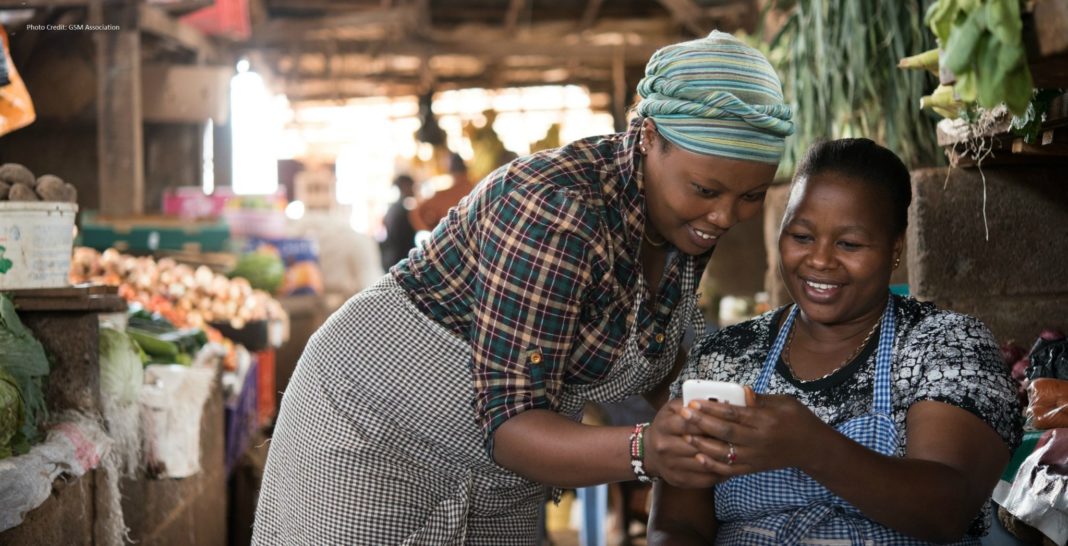Frames are cognitive categories or schema people use to describe, interpret, and sort events, issues, and entities to understand and predict their environment. Framing is conceptually connected to the underlying psychological processes that people use to examine information, to make judgements, and to draw inferences about the world around them.
Indeed, the choice of frame depending on the circumstance, determines its applicability and importance. Thus, framing puts information into a context and establishes frames of reference; so poor people can evaluate information, comprehend meanings, and take action, if appropriate by providing clues.
Framing theory has been applied to explain phenomena in diverse disciplines and context. Many scholars have applied it in sociology. Similarly, it has been used extensively in the field of psychology. Furthermore, it has been applied in marketing. Besides, scholarly work applying framing theory also exists in entrepreneurship and procurement. In addition, economists have also used it to examine economic behaviors and payment for public goods.
However, studies using institutional framing are sparse in financial services, especially among the poor. More so, the bulk of existing studies on financial inclusion of poor households have concentrated only on microfinancing, financial deepening, and provision of basic accounts to explain its scope. These studies have largely ignored the roles of institutional framing in examining financial inclusion of poor households. Yet it is evidenced that frames structure behaviors and actions of poor households, which determine their financial decisions and choices.
In this article, I argue that institutional framing structures the way poor households think about financial choices and alternative courses of actions that they might use to attain the desired financial goals. The actions and behaviors of poor households, which determines their inclusion into formal financial services is unknown. Yet there is evidence that access to and use of basic financial services by rural poor households is determined by their behaviors and actions.
Institutions are the rules of the game of a society or the humanly devised rules or constraints that structures political, economic, and social interactions. They are made up of the formal constraints (rules, laws, constitutions) and informal constraints (norms or behaviors, conventions, self-imposed codes of conduct) and their enforcement characteristics that determines human actions. Institutions determine and structure human interactions by providing incentives and disincentives for people to behave in certain ways in economic, political, and social activities.
Thus, from the foregoing, institutions determine behaviors and actions of poor households towards financial inclusion. Similarly, literature also conceived institutions to consist of regulative (legal), normative (social) and cultural-cognitive elements that together with associated activities and resources, provide stability and meaning to social life. An empirical work conducted by Scott (2001) observed that actors’ socialization guided by values and norms provide consciously the understanding of legal, social, or moral rules and guidelines for behaviors to conceive everyday real world.
 According to economic experts, institutions devise and influence the ways in which economic actors get things done in the context involving human interaction. Indeed, institutions structure incentives in human exchange (economic) by defining and limiting sets of choices and actions for individuals. A work by Scott (2001) further observed that the regulative, normative, and cultural-cognitive pillars are the central building blocks of institutional structures, which provide elastic fibers that guide behavior and actions of actors.
According to economic experts, institutions devise and influence the ways in which economic actors get things done in the context involving human interaction. Indeed, institutions structure incentives in human exchange (economic) by defining and limiting sets of choices and actions for individuals. A work by Scott (2001) further observed that the regulative, normative, and cultural-cognitive pillars are the central building blocks of institutional structures, which provide elastic fibers that guide behavior and actions of actors.
Therefore, this means that poor households’ behavior and actions largely depend on institutional frames that either promote or limit their financial decisions and choices, which determine their inclusion or exclusion from access and use of basic financial services. This is supported by the World Bank (2002) statement that a complex blend of institutions (both formal and informal) promotes and limits market activities by setting mechanisms, which guide behaviors and actions of players.
Indeed, existing evidence on financial inclusion study in Africa indicates that access to and use of basic financial services by rural poor households is determined by their behaviors and actions, which either promotes or limits their financial decisions and choices.
North (1990) referred to the regulative pillar as prescriptions and proscriptions which are written and unwritten rules of the game and the state as rule maker, referee, and enforcer”. Similarly, according to Scott (2001), the regulative processes involve the capacity by the state to establish rules, inspect others conformity to them, and as necessary manipulates sanctions, rewards, and punishments in an attempt to influence future behaviors and actions.
Thus, the regulative component of a country’s institutional characteristics is those existing laws and rules in a particular national environment that promote certain types of behaviors and restrict others. The formal constraints (regulations) shape choice set of individuals in various contexts.
Drawing from the regulative aspect, the World Bank has observed that financial markets work efficiently if they have rules and laws, which influence future behavior and actions of participants including the poor. Thus, in so doing, they constraint and promote certain behaviors and actions of the poor within the financial market.
Indeed, financial inclusion happens within a regulatory framework, which affects poor households’ inclusion into formal financial streams. The regulative institutional frame of poor households is defined to consist of their credit rights, confidence in the bank, and bank fees (taxes) within the financial market. This is supported by the argument that regulation must create the right rules of the game within the financial market that will reinforce responsible practices and behaviors from suppliers, in part so that poor people will trust them enough to choose formal over informal financial services.
Available literature from Africa reveals that lack of credit rights awareness and inadequate assurance to savers of safety of their member savings whenever there is collapse of any financial service provider, is a major challenge to financial inclusion of poor households.
This is consistent with the empirical work of Mpuga (2008), who revealed that poor households in Uganda generally fall outside formal legal frameworks, with more than 80 per cent being excluded. This therefore implies that poor households in most African economies must cope with the existing inefficient regulatory problems, which determine their financial decisions and choices.
From the normative perspective, literature describes it as the informal rules (conventions and code of behavior) that facilitate, motivate, and govern joint action of members of close-knit groups. They arise from the problem-solving activity of individuals as rule-of-thumb guidelines of expected behavior. It is a well-known fact that individuals’ choices in life are determined by norms, which guide their behaviors and actions.
Furthermore, literature also argues that the normative components of institutions define what is appropriate and right for a society’s member. As such, when an institution promotes the correct way of behavior, even in the absence of legal or other sanctions, that institution influences individual actions by normative processes.
 Therefore, the normative aspects of institutions most pronounced in kinship groups, social classes, religious belief systems, and voluntary associations, where common beliefs and values are more likely to exist, impose constraints on social behavior as well as empower and enable social actions. Thus, norms (informal constraints) shape choice set of individuals in various contexts including markets.
Therefore, the normative aspects of institutions most pronounced in kinship groups, social classes, religious belief systems, and voluntary associations, where common beliefs and values are more likely to exist, impose constraints on social behavior as well as empower and enable social actions. Thus, norms (informal constraints) shape choice set of individuals in various contexts including markets.
Indeed, a report by the World Bank suggests that norm-based institutions are critical, especially for the poor who often lack formal alternatives to guide their behaviors and actions in underdeveloped markets. Scholars have observed that since poor households are not detached from social settings where norms are the order of the day, their financial behavior and actions, which determine their financial decisions and choices towards being financially included is derived from their normative institutional frames. This is consistent with the argument of the World Bank that normative institutions play a primary role in determining the financial choices of poor households.
The cultural-cognitive aspects of institutions are the shared conceptions that constitute the frames through which meaning is made. It is characterized by interpretation and conceptions of meaning by actors. The cultural-cognitive institution recognizes that internal interpretive processes are shaped by external cultural frames. It emphasizes cognitions and actors’ generally shared perceptions of what is typical or taken for granted.
Literature has noted that cultural-cognitive conception of institutions stresses the central role played by the socially mediated construction of common frames of meaning through language, meaning systems, and other rules of classifications among individuals. Further, meaning is mediated by use of varying cognitive frames such as metaphors, symbols, and cognitive cues that cast issues in a particular light and suggest possible ways to respond to these issues.
This is consistent with the argument of many economic experts that cognitive programmes such as schemas, frames, inferential sets, and representations affect the way poor people notice, categorize, and interpret financial information in the financial market. It is further suggested that frames are constituted by experiences derived from socialization by the poor to learn financial inclusion traits. The poor households condition the way they think and act based on socialization.
The activity-specific cognitive frame of the poor derived from existing information and knowledge helps in perceiving behavior, formulating financial inclusion goals, and theorizing means to implement it. This information is obtained through experience and development of a sense of appreciation and admiration of other existing poor households who have been financially included or excluded, as role models. This tends to result into networks of interactions and sharing of information thereby giving rise to shared logic of action through which meaning is made.
Therefore, combining the institutional frames of regulative, normative, and cultural-cognitive with microfinancing, financial deepening, financial literacy, and provision of basic accounts may help better explain financial inclusion, and thus, increase the number of poor households who are financially included in Africa.
>>>the author is the Executive Director of the Institute of Development and Economic Research (IDER), and a consultant with the University of California, Los Angeles (UCLA) Capacity Building Center (CBC). He is a member of the African Evaluation Association (AfrEA), International Association of Impact Assessment (IAIA), and International Society for Development and Sustainability (ISDS). As a Development Economist whose aim is to undertake research works that drive evidence-based policy decisions, Felix’ research interest covers areas including Health, Education, Agriculture, Political Economy, Behavioural Economics, etc. Email: [email protected]









